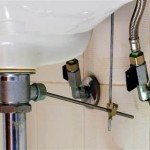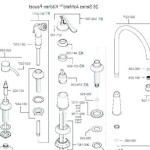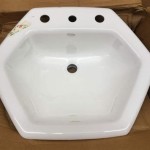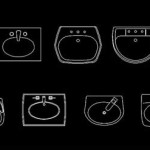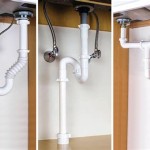How To Fix a Kohler Bathroom Sink Faucet
Kohler bathroom sink faucets are renowned for their design, durability, and performance. However, like any mechanical device subjected to constant use and water pressure, they can experience issues over time. Addressing these problems promptly can prevent further damage, conserve water, and maintain the aesthetic appeal of the bathroom sink. This article provides a comprehensive guide to troubleshooting and resolving common issues with Kohler bathroom sink faucets.
Preparation is essential before commencing any repair. Gather the necessary tools and materials to ensure a smooth and efficient process. This includes, but is not limited to, an adjustable wrench, a Phillips head screwdriver, a flathead screwdriver, penetrating oil (e.g., WD-40), replacement O-rings and washers (obtain the correct size and type specific to the Kohler faucet model), plumber's grease (silicone-based), a basin wrench (for hard-to-reach connections), clean cloths or towels, and a container to catch any dripping water.
Equally important is shutting off the water supply to the faucet before initiating any repairs. Locate the shut-off valves beneath the sink. Typically, there is one valve for hot water and one for cold water. Turn these valves clockwise until they are completely closed. To verify that the water is shut off, briefly turn on the faucet. If water continues to flow, the valves may not be fully functional and will require replacement before proceeding. In the event that the shut-off valves are faulty or inaccessible, it may be necessary to shut off the main water supply to the house. This is usually located in the basement, garage, or near the water meter.
Identifying Common Kohler Faucet Problems
Accurate diagnosis of the faucet issue is paramount to implementing the correct solution. Several common problems can affect Kohler bathroom sink faucets, each requiring a specific approach to repair. Common issues include leaks, reduced water flow, dripping faucets, stiff or difficult-to-move handles, and noisy operation.
Leaks are perhaps the most frequently encountered problem. Leaks can manifest in various locations, such as around the base of the faucet, from the spout, or from the handles. Leaks around the base often indicate a faulty O-ring or supply line connection. Spout drips typically point to a worn-out cartridge or valve seat. Handle leaks can be caused by worn-out O-rings, seals, or a damaged cartridge.
Reduced water flow can be attributed to several factors. Mineral buildup within the aerator is a common cause. Debris and sediment can also accumulate in the supply lines or within the faucet cartridge, obstructing the water flow. Low water pressure in the entire house can also manifest as reduced flow at the faucet, but this is a separate issue to diagnose and resolve. If only one faucet is experiencing reduced flow, the problem is likely localized to the faucet itself.
Dripping faucets are not only annoying but also wasteful, leading to increased water bills. Persistent dripping generally indicates a worn-out or damaged cartridge, valve seat, or O-ring. The specific component responsible for the drip will depend on the faucet model and the location of the drip.
Stiff or difficult-to-move handles can be caused by mineral buildup, corrosion, or a lack of lubrication. Over time, minerals in the water can accumulate on the internal parts of the faucet, causing friction and making it difficult to turn the handles smoothly. In some cases, the handles may become completely seized.
Noisy faucet operation can result from a variety of issues. Water hammer, a loud banging sound that occurs when the water is suddenly shut off, can be caused by high water pressure or loose pipes. Whistling sounds can be caused by restrictions in the supply lines or a faulty cartridge. Grinding noises may indicate worn-out internal components. Proper identification of the noise is essential for addressing the underlying cause.
Replacing a Kohler Faucet Cartridge
The cartridge is a critical component in many Kohler bathroom sink faucets, controlling the mixing and flow of water. When a faucet drips or experiences reduced water flow, replacing the cartridge is often the solution. To replace the cartridge, first ensure that the water supply is shut off.
Depending on the faucet model, the handle removal process may vary slightly. Typically, there will be a small set screw located on the side or beneath the handle. Use a small Allen wrench or screwdriver to loosen the set screw. Once the set screw is loosened, the handle should pull off easily. If the handle is stuck, gently rock it back and forth while pulling. Avoid using excessive force, as this could damage the handle or the faucet body.
Once the handle is removed, the cartridge retaining clip or nut will be exposed. This clip or nut secures the cartridge in place. Use a pair of pliers or a wrench to carefully remove the retaining clip or nut. Note the orientation of the clip or nut before removing it, as it will need to be reinstalled in the same way.
With the retaining clip or nut removed, the old cartridge can be pulled out. The cartridge may be somewhat difficult to remove if it has been in place for a long time. Wiggling the cartridge gently while pulling can help to loosen it. If necessary, use a pair of pliers to grip the cartridge and pull it out. Be careful not to damage the faucet body during this process.
Before installing the new cartridge, thoroughly clean the inside of the faucet body. Remove any debris or mineral buildup. Apply a thin layer of plumber's grease to the O-rings on the new cartridge. This will help to ensure a smooth installation and prevent leaks. Insert the new cartridge into the faucet body, aligning it properly with the corresponding slots or markings. Ensure that the cartridge is fully seated before proceeding.
Reinstall the cartridge retaining clip or nut, tightening it securely. Replace the faucet handle and tighten the set screw. Turn the water supply back on slowly and check for leaks. If there are no leaks, operate the faucet handles to ensure that they are functioning properly. If leaks are detected, re-examine the cartridge installation and tighten the retaining clip or nut further.
Addressing Mineral Buildup and Corrosion
Mineral buildup and corrosion are common problems that can affect the performance and longevity of Kohler bathroom sink faucets. Hard water contains minerals such as calcium and magnesium, which can accumulate over time, forming deposits that restrict water flow, stiffen handles, and cause leaks.
The aerator, located at the tip of the faucet spout, is often the first place where mineral buildup becomes evident. To clean the aerator, unscrew it from the faucet spout. Use a small brush or toothpick to remove any visible mineral deposits. Soak the aerator in white vinegar for several hours or overnight to dissolve stubborn deposits. Rinse the aerator thoroughly with water before reinstalling it.
For mineral buildup inside the faucet body, disassemble the faucet as much as possible, following the steps outlined in the cartridge replacement section. Soak the individual components in white vinegar to dissolve the mineral deposits. Use a brush or cloth to scrub away any remaining residue. Rinse the components thoroughly with water before reassembling the faucet.
Corrosion can occur on the exterior surfaces of the faucet, particularly in areas exposed to moisture. To remove corrosion, use a mild abrasive cleaner or a mixture of baking soda and water. Apply the cleaner to the affected areas and scrub gently with a soft cloth or brush. Rinse the faucet thoroughly with water and dry it with a clean towel. For heavily corroded areas, a specialized metal polish may be necessary.
Preventing future mineral buildup and corrosion is crucial for maintaining the faucet's performance. Consider installing a water softener to reduce the mineral content of the water. Regularly clean the faucet with a mild cleaner and dry it thoroughly after each use. Apply a thin layer of plumber's grease to the faucet threads and O-rings to prevent corrosion and ensure smooth operation.
By understanding the common problems that can affect Kohler bathroom sink faucets and implementing the appropriate repair techniques, it is possible to maintain the faucet's optimal performance and extend its lifespan. Regular maintenance and prompt attention to minor issues can prevent more serious problems from developing, saving time, money, and water in the long run.

Kohler Wide Spread Taboret Lavatory Faucet Stems Replaced

Kohler Faucet Repair Valve Stem Replacement To Stop Dripping
Kohler Aderlee Widespread Bathroom Faucet Costco

K 10215 4 Forté Single Control Bathroom Sink Faucet Kohler

Kohler K 10272 4 Bn Forte Widespread Bathroom Faucet With Build Com

Kohler Ashan Single Hole Handle Bathroom Faucet In Vibrant Brushed Nickel K R27136 4d Bn The Home Depot

Kohler Maxton Brushed Nickel 4 In Centerset 2 Handle Watersense Bathroom Sink Faucet With Drain The Faucets Department At Com

K 14406 4 Purist Widespread Sink Faucet With Low Lever Handles Kohler

K 45800 4 Alteo Single Hole Bathroom Sink Faucet Kohler

K 13462 Sculpted Single Hole Touchless Ac Powered Commercial Bathroom Sink Faucet With Insight Technology Temperature Mixer And 5 3 4 Spout Kohler
Related Posts
